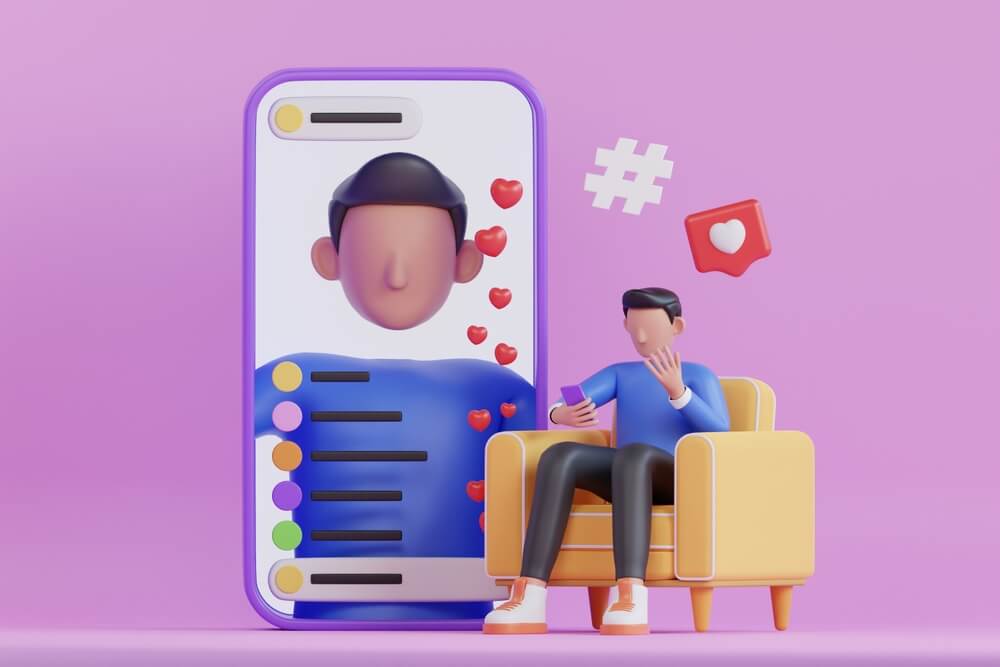Introduction
Table of Contents
Making a career change at 30 might feel like jumping off a cliff without a parachute—but what if it’s actually the smartest move you’ll ever make? Whether you’re stuck in a job that drains your energy, craving more purpose, or simply ready to explore a new path, this is your moment. And yes, career change at 30 is not only possible—it’s increasingly common, and often transformational.
In this guide, we’ll walk through a bold, practical blueprint to help you pivot with confidence. From mindset shifts to actionable strategies, you’ll learn how to make your transition smooth, strategic, and successful.

🎯 Why 30 Is the Perfect Age for a Career Change
Let’s bust the myth right away: 30 is not “too late.” In fact, it’s a sweet spot.
- You’ve gained valuable work experience.
- You know what you don’t want.
- You’re still young enough to learn, adapt, and grow.
According to a LinkedIn survey, nearly 60% of professionals have considered a career change by age 30, and many cite burnout, lack of fulfillment, or better opportunities as key motivators.
Example: A marketing executive who spent eight years climbing the corporate ladder realized she wanted to become a wellness coach. She retrained, built a personal brand, and now runs a thriving online business.
🧠 Step 1: Reframe Your Mindset
Before you update your resume or enroll in a course, start with your mindset. A career change at 30 requires mental clarity and emotional resilience.
Common Mental Blocks:
- “I’ve wasted my degree.”
- “I’m too old to start over.”
- “What will people think?”
These thoughts are normal—but they’re not facts. Reframing them is essential.
Try This Instead:
- “My degree gave me transferable skills.”
- “30 is just the beginning.”
- “I’m choosing growth over comfort.”
Tip: Journal your fears and reframe them into empowering beliefs. This simple exercise builds confidence and clarity.

🔍 Step 2: Audit Your Skills and Passions
You don’t need to start from scratch. Most people have transferable skills that can be repurposed in a new industry.
Ask Yourself:
- What tasks energize me?
- What skills do I use effortlessly?
- What problems do I love solving?
Example: A graphic designer might pivot into UX design, leveraging visual skills and user empathy. A teacher could transition into instructional design or coaching.
Tool Tip: Use platforms like Skillshare or Coursera to explore new fields while building on existing strengths.
📚 Step 3: Upskill Strategically
Once you’ve identified your target field, it’s time to bridge the gap. Upskilling doesn’t mean going back to college for four years. It can be lean, focused, and affordable.
Popular Options:
- Online certifications (Google, HubSpot, Meta)
- Bootcamps (coding, design, marketing)
- Mentorship or coaching
Stat: According to CareerFoundry, 80% of career changers who completed bootcamps landed jobs within six months.
Tip: Choose programs with real-world projects and community support. Learning is easier when you’re not alone.
💼 Step 4: Build a Personal Brand
In today’s digital world, your online presence matters—especially during a career change at 30. Employers and clients want to see your story, not just your resume.
Start With:
- LinkedIn optimization
- Personal website or portfolio
- Thoughtful content (blogs, posts, videos)
also read : https://sajjadnawaz.com/personal-branding-in-2025/
Example: A finance analyst transitioning into wellness coaching started sharing her journey on LinkedIn. Her authenticity attracted clients before she even launched her business.
SEO Tip: Use keywords like “career change at 30,” “midlife pivot,” and “professional reinvention” in your content to boost visibility.
🤝 Step 5: Network Like a Pro
Networking isn’t just about handing out business cards—it’s about building genuine relationships. During a career change, your network can open doors faster than any job board.
Where to Start:
- Join niche communities (Facebook groups, Slack channels)
- Attend webinars and virtual meetups
- Reach out to people already in your target field
Message Template:
“Hi [Name], I’m exploring a career change at 30 and admire your work in [industry]. Would you be open to a quick chat or sharing advice?”
Tip: Don’t ask for a job—ask for insight. People love helping when it’s authentic.
🧭 Step 6: Test Before You Leap
Before quitting your job, test the waters. This reduces risk and builds confidence.
Smart Ways to Test:
- Freelance or consult part-time
- Volunteer in your new field
- Launch a side project or blog
Example: A corporate HR manager interested in mental health started a podcast interviewing therapists. It helped her build credibility and clarity before transitioning into wellness coaching.
Bonus: These experiments often lead to unexpected opportunities.
💰 Step 7: Plan Financially
Let’s be real—career change can affect your income temporarily. Planning ahead ensures you don’t panic mid-transition.
Financial Checklist:
- Save 3–6 months of expenses
- Create a lean budget
- Explore freelance gigs or part-time work
Stat: According to Forbes, career changers who plan financially are 2x more likely to succeed than those who don’t.
Tip: Use budgeting apps like YNAB or Mint to track spending and stay on course.
📝 Step 8: Update Your Resume and Story
Your resume should reflect your new direction, not just your past. Focus on transferable skills, achievements, and your “why.”
Resume Tips:
- Use a summary that highlights your pivot
- Quantify achievements (e.g., “Increased engagement by 40%”)
- Tailor each application to the role
Cover Letter Tip: Share your story. Explain why you’re making a career change at 30 and how your background adds unique value.

🚀 Step 9: Apply with Confidence
Now comes the leap. Apply boldly, even if you don’t meet every requirement. Many employers value attitude and adaptability over perfect credentials.
Mindset Shift: You’re not starting over—you’re starting smarter.
Tip: Track applications, follow up, and stay persistent. Rejection is part of the process, not a reflection of your worth.
🌟 Step 10: Embrace the Journey
Career change isn’t a one-time event—it’s a journey. There will be highs, lows, and unexpected detours. Stay curious, stay kind to yourself, and celebrate every step forward.
Quote to Remember:
“It’s never too late to be what you might have been.” — George Eliot
🔚 Final Thoughts: Your Bold Blueprint in Action
To recap, here’s your bold blueprint for a career change at 30:
- Reframe your mindset
- Audit your skills and passions
- Upskill strategically
- Build a personal brand
- Network with intention
- Test before you leap
- Plan financially
- Update your resume and story
- Apply with confidence
- Embrace the journey
Changing careers at 30 isn’t reckless—it’s courageous. It’s a declaration that your growth matters more than comfort. So if you’re standing at the edge of change, take the leap. Your future self will thank you.
Is a career change at 30 too late to start over professionally?
Not at all. Many professionals successfully pivot at 30, bringing transferable skills, maturity, and a clearer sense of purpose. In fact, changing careers at 30 can be a strategic move toward long-term fulfillment and financial growth.
What are the biggest challenges in making a career change at 30, and how can I overcome them?
Common challenges include fear of failure, financial instability, and lack of experience in the new field. Overcoming them involves strategic planning, upskilling through online courses, networking, and building a personal brand that highlights your strengths.
How do I identify the right career path when considering a career change at 30?
Start by assessing your interests, values, and strengths. Use tools like personality tests, career coaching, or informational interviews to explore options. Align your choice with long-term goals and lifestyle preferences.
Can I switch careers at 30 without going back to college?
Yes. Many industries value skills and experience over formal education. You can learn through bootcamps, certifications, online platforms like Coursera or LinkedIn Learning, and hands-on freelancing or internships.
How long does it typically take to successfully make a career change at 30?
The timeline varies, but with focused effort, most people see significant progress within 6–12 months. This includes learning new skills, building a portfolio, and landing interviews or freelance gigs.
What are the best industries for a career change at 30?
Fast-growing fields like tech, digital marketing, UX design, personal branding, coaching, and wellness are ideal. These industries often welcome career changers with diverse backgrounds and offer flexible entry points.
How can I financially prepare for a career change at 30?
Create a savings buffer, reduce unnecessary expenses, and explore side hustles or freelance work in your target field. Budgeting and financial planning are key to reducing stress during the transition.
What role does personal branding play in a successful career change at 30?
A strong personal brand helps you stand out, build credibility, and attract opportunities—even in a new industry. Use platforms like LinkedIn to showcase your journey, skills, and value proposition.
How do I explain a career change at 30 in interviews or on my resume?
Frame it as a strategic decision driven by growth, passion, or alignment with your strengths. Highlight transferable skills, relevant projects, and your proactive efforts to learn and adapt.
Are there success stories of people who made a career change at 30 and thrived?
Absolutely. From corporate professionals becoming entrepreneurs to teachers transitioning into UX design, countless individuals have reinvented themselves at 30 and beyond. Sharing these stories can inspire and validate your own journey.
💬 Let’s Talk!
Have you made a career change at 30—or thinking about it? Share your story in the comments or tag someone who needs this blueprint. Let’s build a community of bold professionals rewriting their paths.





